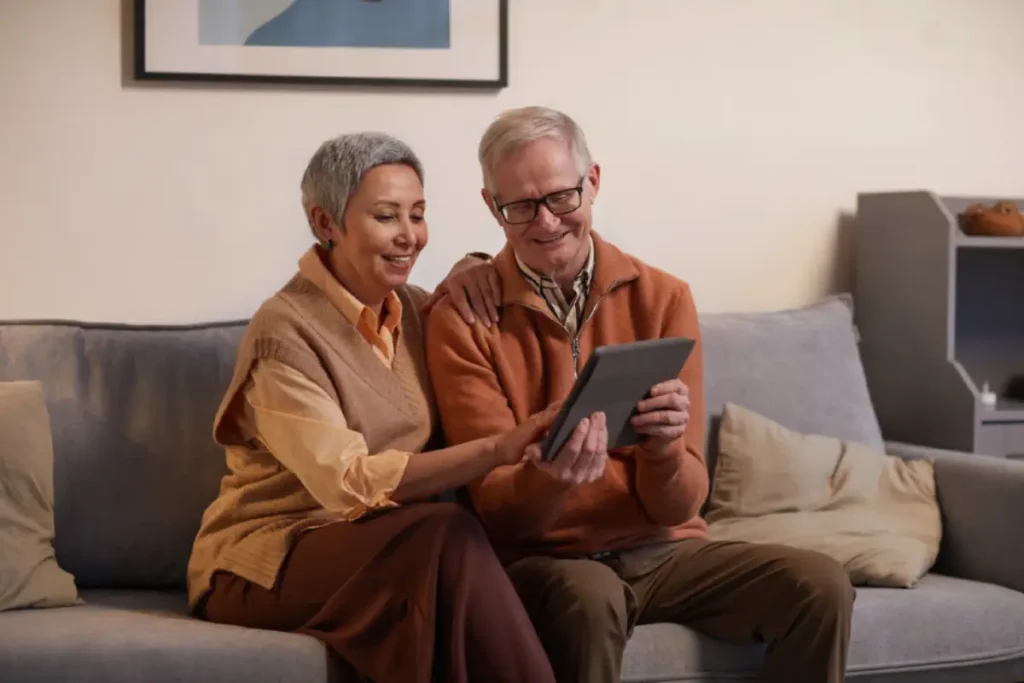The Digital Revolution: How Seniors Can Benefit from Technology
Introduction
In today’s digital age, technology has revolutionized the way we live, work, and interact. While younger generations have readily embraced technological advancements, seniors sometimes find it challenging to keep up with the fast-paced digital world. However, technology offers a plethora of benefits to seniors, enhancing their daily lives, safety, and overall well-being. This article explores how seniors can benefit from various technological advancements and ways to bridge the digital divide for this demographic.

Embracing Communication Tools
1. Staying Connected with Loved Ones
Technology enables seniors to stay connected with their family and friends, regardless of geographical distance. Video conferencing platforms like Skype or Zoom allow face-to-face interactions, reducing feelings of loneliness and isolation. Seniors can share precious moments, participate in family events, and keep abreast of their loved ones’ lives through virtual means.
2. Social Media for Community Engagement
Social media platforms like Facebook and Instagram provide seniors with opportunities to join interest groups and connect with like-minded individuals. This fosters a sense of community, leading to improved mental well-being and a sense of belonging. Seniors can share their experiences, expertise, and interests, thus forming meaningful connections that transcend physical boundaries.
Enhancing Safety and Healthcare
3. Wearable Health Devices
Smartwatches and fitness trackers equipped with health monitoring features can help seniors track their vitals, detect potential health issues, and notify emergency services in case of emergencies. These devices can monitor heart rate, blood pressure, and even fall detection, providing real-time health data to both seniors and their caregivers. By actively monitoring their health, seniors can take timely actions to prevent potential health complications.
4. Medication Management Apps
Managing multiple medications can be challenging for seniors. Mobile apps designed for medication reminders can help seniors keep track of their medication schedules, reducing the risk of missed doses and promoting better adherence to treatment plans. Additionally, some apps allow caregivers to be notified if medication is not taken, enabling a proactive approach to healthcare management.
Simplifying Daily Tasks
5. Voice-Activated Assistants
Virtual assistants like Amazon’s Alexa or Apple’s Siri can assist seniors in various tasks, such as setting reminders, answering questions, and controlling smart home devices. By simply using their voice, seniors can control the lights, thermostat, and other appliances, making daily life more convenient. Voice-activated assistants also act as companions, engaging in casual conversations and providing a sense of companionship.
6. Grocery Delivery Services
As mobility may become a concern for some seniors, online grocery delivery services make it convenient for them to order groceries from the comfort of their homes. With just a few clicks, seniors can access a wide range of products and have them delivered directly to their doorstep. This service not only saves time and effort but also ensures that seniors have access to fresh and nutritious food.
Learning and Entertainment
7. Online Learning Platforms
Retirement doesn’t mean the end of learning. Seniors can expand their knowledge and skills through online learning platforms, such as Coursera or Udemy, offering a wide range of courses catering to different interests. From art and history to technology and gardening, there are numerous opportunities for seniors to indulge in lifelong learning, stimulating their minds and keeping them intellectually engaged.
8. E-Books and Audiobooks
For seniors who love to read, digital books and audiobooks make reading more accessible, especially for those with visual impairments. E-readers and audiobook platforms allow seniors to adjust font sizes, background colors, and audio playback speeds, catering to their specific preferences. This enriching form of entertainment opens doors to countless stories, knowledge, and adventures.
Improving Mobility
9. Ride-Sharing Services
As driving may become challenging or unsafe for some seniors, ride-sharing platforms like Uber and Lyft provide them with a convenient means of transportation. With just a few taps on their smartphones, seniors can request a ride and travel comfortably to their desired destinations, allowing them to maintain their independence and social engagements.
10. Mobility Aids and Devices
Technological advancements have led to the development of innovative mobility aids, such as electric scooters and stairlifts, enhancing seniors’ mobility and quality of life. These devices allow seniors with mobility challenges to navigate their homes and communities with greater ease and confidence, promoting active and independent lifestyles.
Addressing Digital Literacy
11. Senior-Friendly User Interfaces
Designing user interfaces with larger fonts, intuitive navigation, and clear instructions can help seniors navigate technology more comfortably. Simple and user-friendly interfaces reduce the learning curve and empower seniors to use digital devices with ease.
12. Technology Training Programs
Offering technology training programs tailored to seniors can help them build confidence in using various devices and applications effectively. These programs can be conducted in community centers, senior living facilities, or even virtually, enabling seniors to acquire essential digital skills and stay connected with their evolving world.
Conclusion
Technology has become an integral part of modern life, and seniors can greatly benefit from its many advancements. From staying connected with loved ones to simplifying daily tasks and enhancing safety, technology offers endless possibilities to improve the lives of seniors. Bridging the digital divide through user-friendly interfaces and training programs is essential to ensure seniors can harness the full potential of technology and lead fulfilling lives in the digital age.
Is technology safe for seniors?
Technology can be safe for seniors if they are cautious and take appropriate security measures. It’s crucial to keep software and devices updated and avoid sharing personal information online.
What if seniors find technology overwhelming?
Seniors can start with basic devices and gradually explore more features as they become comfortable. Patience and practice are key to becoming tech-savvy.
Are there specific apps designed for senior citizens?
Yes, there are several apps catering to seniors’ needs, including medication reminders, brain-training games, and senior-friendly news platforms.
How can technology improve mental health in seniors?
Technology facilitates social interactions, cognitive stimulation, and access to mental health resources, all of which can positively impact seniors’ mental well-being.
What role can family members play in helping seniors embrace technology?
Family members can provide support by introducing seniors to technology, demonstrating its benefits, and offering ongoing assistance when needed.
The video below provides more insight into the topic:
I hope you find this helpful!
Adams High Tech

